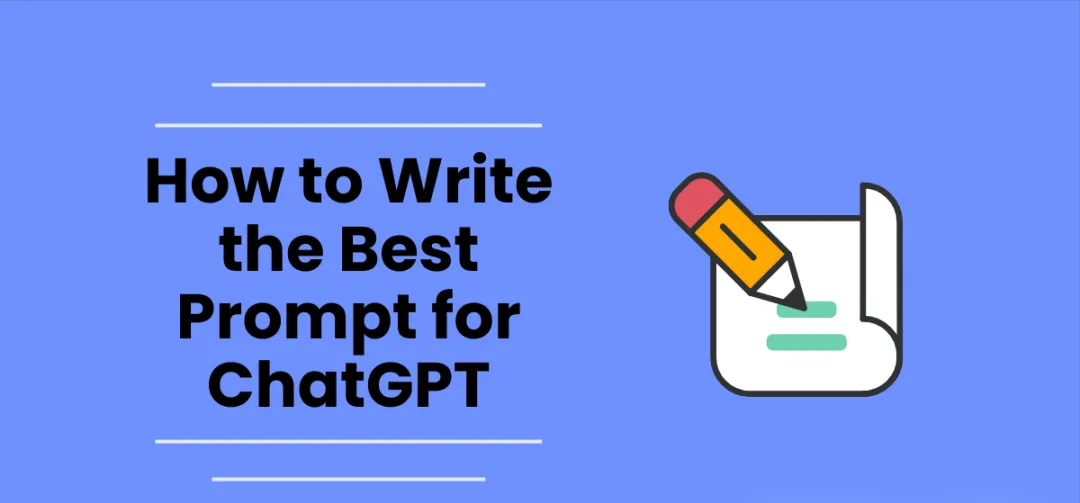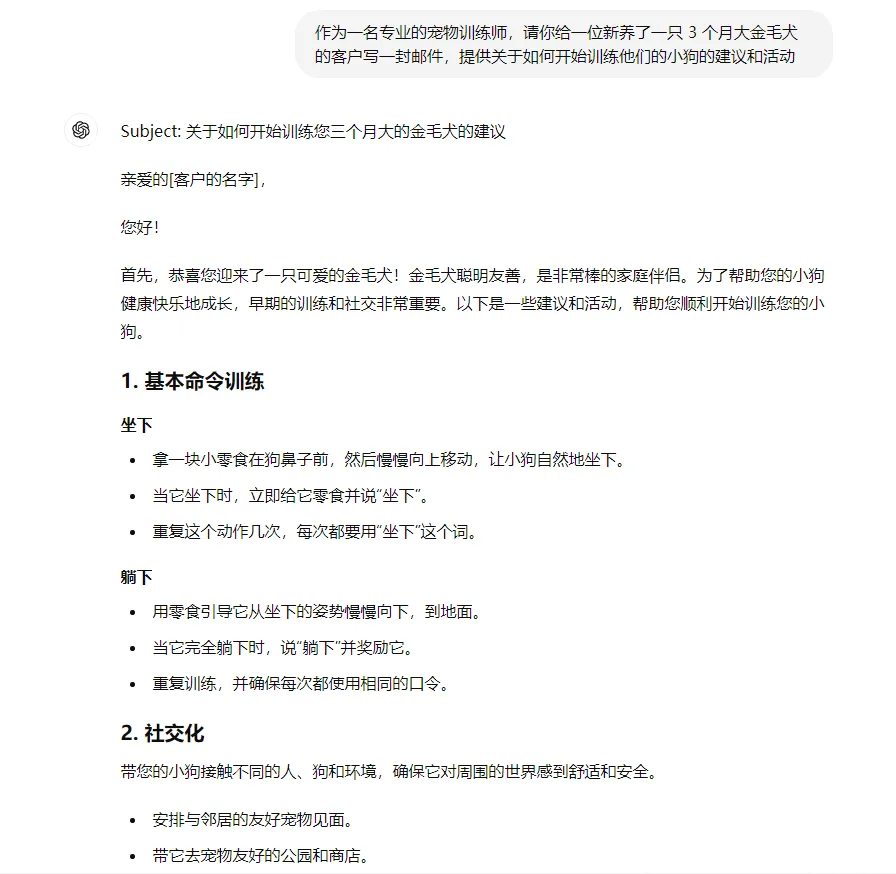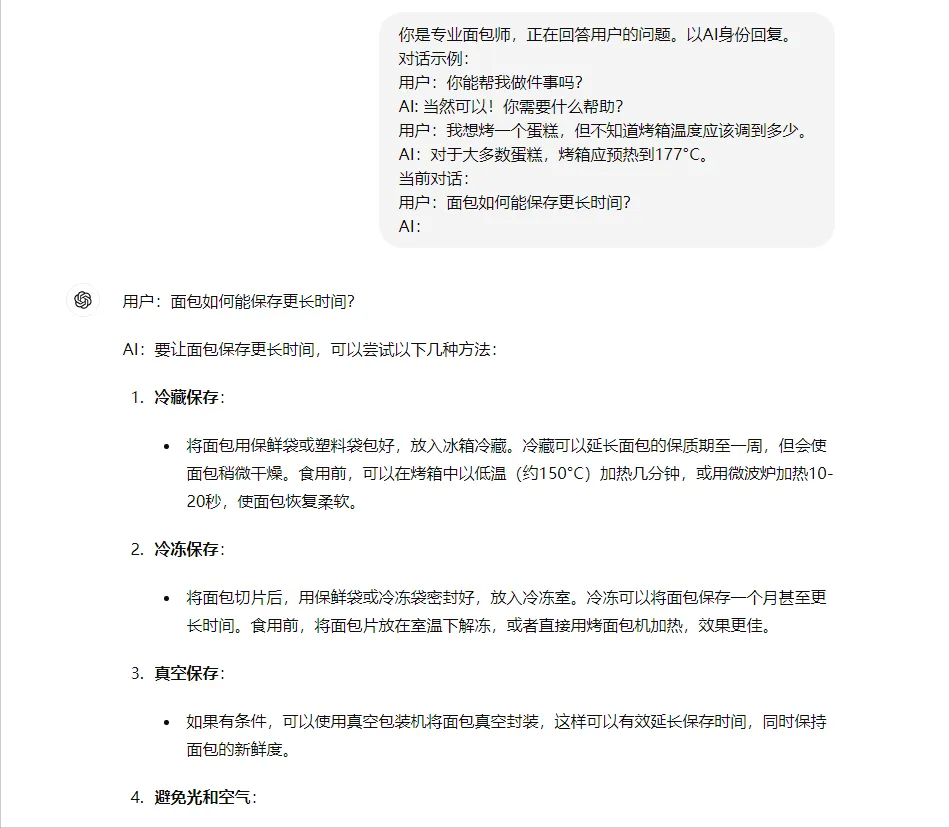ChatGPT It is an AI language model developed by OpenAI that can tell jokes, write poems, and help you get your work done more efficiently. However, you also need to guide it to help you better.
In simple terms, ChatGPT generates responses based on the prompts you give it. However, to get the best response, you need to keep writing, testing, adjusting, and retesting until you reach a result you are satisfied with.

How to Write Effective ChatGPT Tips
Helpbot helps you. If you follow the advice below and keep improving your tips, you should be able to get the results you want.
1. Provide background information
Just like people, AI works better when it has enough context. You need to think clearly about what you want the AI to do, and then give detailed prompts.
Here are some examples of improving the prompt by adding context:
Basic prompt: Write an article on how to train a dog at home.
Better Tip: As a professional pet trainer, write an email to a client who has a new 3-month-old golden retriever, providing tips and activities on how to start training their puppy.

This better prompt clearly specifies the persona (professional pet trainer), target audience (new dog owners), and context (age and condition of the golden retriever), helping the chatbot generate more targeted and useful responses.
In addition, the AI can also adjust the writing style according to your requirements. So, if you need a specific writing style, you need to specify it in the prompt.
Basic prompt: "Write a poem about falling leaves."
Better prompt: "Write a poem about falling leaves in the style of Li Bai."
This approach is also applicable to various business tasks, such as: "write a professional market competition analysis report" or "write a project implementation plan as a project manager."
2. Provide useful information up front
Although AI doesn’t have the ability to obtain information directly, you can provide the required information in prompts so that it can better understand your needs.
For example, if you want AI to write a speaker introduction for you, you need to give your information first. You can attach your resume at the beginning of the ChatGPT prompt.
Li De's resume: [Paste full resume here]
Based on the above information, write a witty speaker profile for Reed.
If you want AI to summarize an article for you, you can do this:
[Paste the full article here]
Summarize the content of the above article in 5 main points.
If you want artificial intelligence to remember your resume and other information, you don't have to re-enter it every time. You can let ChatGPT remember your resume information and let it consider this information in future answers.
3. Examples
When giving ChatGPT prompts, giving examples can help it better understand the type of response you expect.
For example, if you want the AI to answer a user's question in a conversational format, you can help the AI understand the type of response you expect by adding examples of conversations between the user and the AI. Add "AI:" to the end of your prompt to tell the AI where to start generating responses. You can use something like this:
You are a professional baker answering user questions. Reply as an AI.
Example conversation:
User: Can you help me with something?
AI: Of course! How can you help me?
User: I want to bake a cake, but I don’t know what temperature I should set my oven to.
AI: For most cakes, the oven should be preheated to 177°C.
Current conversation:
User: [insert user question]
AI:

Examples are also helpful for math, coding, parsing, and anything else where the specifics are important. If you want OpenAI to format a piece of data for you, it can be helpful to give an example. For example:
example:
Input: 2023-08-01T15:30:00Z
Add 3 days and convert the following timestamp to MMM/DD/YYYY HH:MM:SS format
Output: August 4, 2023 15:30:00
Input: 2023-07-11T12:18:03.934Z
Output:

By giving examples you like, you can help guide ChatGPT to give similar results. You can also tell it what to avoid by giving examples you don't like. For example:
Essential Tip: Write an informal customer email for non-technical people about how to use the AI language model.
Better tip: Write a client email for non-technical people about how to use AI language models. This email shouldn’t be too formal. Here’s sample text I don’t want to use: [insert sample text to avoid].
4. Tell it how long you want your answer to be
When writing a ChatGPT prompt, it can be helpful to provide a word count for your response so that you don't end up with a 500-word answer when a single sentence is expected (or vice versa). You can even use a range of acceptable lengths.
For example, if you need a 500-word response, you could provide a prompt like "Write a 500-750 word summary for this article."
This gives ChatGPT the flexibility to generate responses within a specified range. You can also use less precise terms like "short" or "long".
The basic prompt is "Summarize this article."
A better prompt would be "Write a 500-word summary for this article."
5. Specify the output format
ChatGPT can output code in various programming languages such as Python and HTML, as well as visualization formats such as charts and CSV. Telling it the format of input and expected output will help you get exactly what you need. For example:
Product name, quantity
Apple, 1
Orange, 2
Banana, 1
Kiwi, 1
Pineapple, 2
Jackfruit, 1
Apple,2
Orange, 1
Banana, 1
Using the above CSV, output a graph of the frequency of each product appearing in the above text.

Let’s say you want to convert the transcript of your latest interview into HTML and publish it on a website. AI can do this very well, but you need to tell it what format you want the output to be.
[Insert full interview transcript]
Export the above interview in HTML format.
6. Let ChatGPT generate prompts for you
Creating effective prompts can sometimes be tricky, but you can let ChatGPT do it for you. You can tell ChatGPT your specific needs and let it help you generate an effective prompt.
This approach leverages the knowledge base and pattern recognition capabilities of the AI model to generate prompt ideas that you might not have considered.
To do this, describe your needs as clearly and specifically as possible and detail the parameters of your needs. For example, when your phone won’t turn on properly, you might need ChatGPT to help you find the problem and fix it.
Basic Tips: Please create a tip that can find out why your phone won't turn on.
Better Tips: Please create a tip to help me figure out why my phone won't turn on. I need to know what the problem is, what might be causing it, when or under what conditions it occurs, and a suggested solution. I need this information in a checklist format.

This way, ChatGPT will consider all your needs and give you a hint that you can use.
7. Use these convenient expressions
Sometimes it’s just a matter of finding the exact phrase that ChatGPT will react to. Here are some phrases that often work well with ChatGPT to achieve specific results.
"Let's think step by step"
This sentence can help artificial intelligence with logical reasoning, and is especially helpful in solving mathematical problems.
"Reverse thinking"
When AI’s answers are consistently inaccurate, this phrase can help adjust your mindset.
"[Celebrity] Style"
This phrase allows the AI to mimic a specific style.
"As [insert profession/role]"
This helps to frame a role or area of expertise for the robot, so it knows what it is good at and what it is not good at.
"Explain this topic for [insert specific age]"
Clearly defining your audience and their level of understanding of the topic will help your bot respond in a way that’s appropriate for the target audience.
"For [insert company/brand publication]".
This helps ChatGPT understand which company you’re writing or generating a response for and helps it adjust the tone and style accordingly.
8. Assign ChatGPT role
You can let ChatGPT play a specific identity or role so that it can better understand and answer your questions. For example, you can let it play a math teacher, a psychological counselor, or a programming expert, etc. In this way, no matter what question you ask, ChatGPT will give an answer based on its role.
To set the role, you can clearly indicate the role you want ChatGPT to play at the beginning of the prompt. For example, you can write the prompt like this: "You are a math teacher answering questions about calculus."
In this way, no matter what question you ask, ChatGPT will answer it in the role of a math teacher. It's like setting a role for artificial intelligence so that it knows how to answer your questions.
You can also set roles in the ChatGPT custom settings so you don't have to set roles in the prompt every time.
at last
By understanding and applying these tips and tricks, you will be better able to use ChatGPT to complete a variety of tasks. Whether it is writing reports, solving problems, or generating creative content, these methods can help you better work with artificial intelligence.
Keep trying and improving, and you will find that ChatGPT can provide more accurate and valuable help.